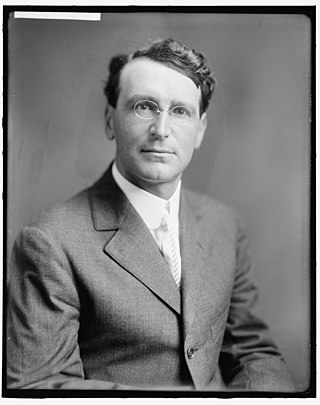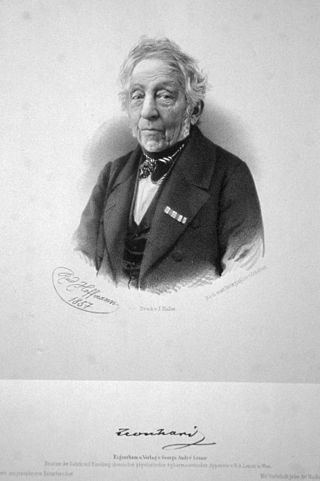
Silt is granular material of a size between sand and clay and composed mostly of broken grains of quartz. Silt may occur as a soil or as sediment mixed in suspension with water. Silt usually has a floury feel when dry, and lacks plasticity when wet. Silt also can be felt by the tongue as granular when placed on the front teeth.

A loess is a clastic, predominantly silt-sized sediment that is formed by the accumulation of wind-blown dust. Ten percent of Earth's land area is covered by loesses or similar deposits.

Aeolian processes, also spelled eolian, pertain to wind activity in the study of geology and weather and specifically to the wind's ability to shape the surface of the Earth. Winds may erode, transport, and deposit materials and are effective agents in regions with sparse vegetation, a lack of soil moisture and a large supply of unconsolidated sediments. Although water is a much more powerful eroding force than wind, aeolian processes are important in arid environments such as deserts.

Dorothy Hill, was an Australian geologist and palaeontologist, the first female professor at an Australian university, and the first female president of the Australian Academy of Science.
Arthur Edmund Seaman was a professor at the Michigan College of Mines and curator of the A. E. Seaman Mineral Museum which bears his name.
Vesselina Vassileva Breskovska was a 20th-century Bulgarian geologist, mineralogist and crystallographer.

The Ogallala Formation is a Miocene to early Pliocene geologic formation in the central High Plains of the western United States and the location of the Ogallala Aquifer. In Nebraska and South Dakota it is also classified as the Ogallala Group. Notably, it records the North American Land Mammal Ages (NALMAs) Hemphillian, Clarendonian, and Barstovian. It also includes an excellent record of grass seeds and other plant seeds, which can be used for biostratigraphic dating within the formation. The Ogallala Formation outcrops of Lake Meredith National Recreation Area preserve fish fossils. Similar specimens from the same unit are found at Alibates Flint Quarries National Monument in Texas.

Margaret Dorothy Foster was an American chemist. She worked for the United States Geological Survey, and was recruited to work on the Manhattan Project. She wrote dozens of research papers on the chemistry of the natural world and assaying methods.

Adolph Knopf was an American geologist. Educated at the University of California, Berkeley, he held professional appointments at the United States Geological Survey, Yale University, and Stanford University. He was primarily a petrologist and mineralogist, though later in his career contributed to geochronology. He performed much of his field work in the western United States, investigating mineral deposits in Alaska, the Boulder Batholith in Montana, and the Gold Country of California.

The Blanco Formation, originally named the Blanco Canyon Beds, is an early Pleistocene geologic formation of clay, sand, and gravel whitened by calcium carbonate cementation and is recognized in Texas and Kansas.

Karl Cäsar von Leonhard was a German mineralogist and geologist. His son, Gustav von Leonhard, was also a mineralogist.
Ralph Early Grim was an American geologist and scientist, often referred to as the "Father of Mineralogy" because he made many discoveries during his investigations of clay materials. He was one of the most outstanding mineralogists of his time and was well-known throughout the world in the field of clay science and technology. Grim's career spanned over 60 years and he received many honors and awards in the field of mineralogy. Some of the textbooks he wrote have been standard university textbooks in mineralogy for many years.
Ruth Doggett Terzaghi was an American geologist and civil engineer. She held several teaching positions relating to geology and engineering geology. In addition to pursuing her own research, she assisted her husband Karl Von Terzaghi in many of his geotechnical engineering and soil mechanics projects.
Peggy-Kay Hamilton (1922–1959) was born in Illinois in 1922 and was an American Research Associate in Mineralogy in the Department of Geology at Columbia University. One of Hamilton's first research breakthroughs was developing Research Project 49, otherwise known as the study of clay minerals. In her later research years, her focus shifted and led to her becoming involved full time in the study of uranium.
Sorojon Mikhailovna Yusufova was a Tajik geologist and academic of the Soviet era.

Alice Mary Dowse Weeks was an American geologist. Weeksite is named after her. She identified uranophane in 1953 along with Mary E. Thompson. Weeks was the first to propose the concept of oxidation of ore deposits that contain uranium, vanadium, and other accessory metals. She founded the Geology Department at Temple University in Philadelphia, and was a strong proponent of women in geology.
Barbara Dutrow is an American geologist who is the Adolphe G. Gueymard Professor of Geology at Louisiana State University. Dutrow wrote the textbook Manual of Mineral Science. She was elected President of the Geological Society of America in 2021.
Claudia Mora is the dean of the Jackson School of Geosciences at the University of Texas at Austin and the John A. and Katherine G. Jackson Decanal Chair in the Geosciences.
Boris Borisovich Zvyagin was a Russian mineralogist and crystallographer. He is a pioneer in the structural study of layer minerals by electron diffraction and is also known for his work on modular structures, including polymorphism, polytypism, and order-disorder structures in crystals.
Waldemar Theodore Schaller was an American mineralogist and longtime employee of the United States Geological Survey (USGS).










